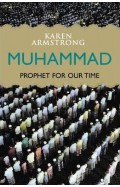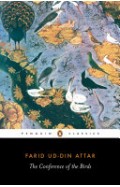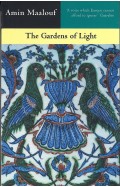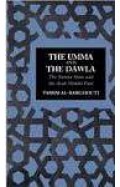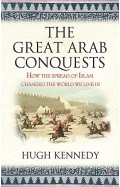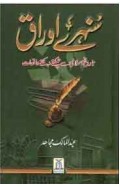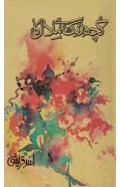- Home
- Religion & Spirituality
- Early Islamic Textiles from Along the Silk Road - The Al-Sabah Collection, Kuwait
Early Islamic Textiles from Along the Silk Road - The Al-Sabah Collection, Kuwait
By: Friedrich Spuhler
-
Rs 10,496.25
- Rs 13,995.00
- 25%
You save Rs 3,498.75.
Due to constant currency fluctuation, prices are subject to change with or without notice.
Presented as a whole, this extraordinary collection, which has remained largely unpublished until now, is a rich source of information not only for the history of textiles, but also for the history of the Silk Road itself. Scientific analysis has allowed a number of these textiles to be dated with precision for the first time, making the collection an especially valuable scholarly resource.
The exceptional beauty and variety of the c. 400 garments and textile fragments reflect the many strands of influence along the Silk Road. The textiles display an astonishing range of motifs, patterns and calligraphic designs. A selection of rare intact garments vividly evokes the lives of merchants, pilgrims and travellers, as well as the inhabitants of countries linked by the Silk Road.
Table of Contents
Introduction • 1. Clothing and Accoutrements: Garments, Accessories and a Doll • Caps and a Turban • Pouches • A Shawl, a Veil and Sashes • 2. Patterned Fragments: Stripes, Chequers and Zigzags • ‘Stylized Drapery’ • Palmettes and Vine-Scrolls • Birds and Fantastic Creatures Geometric and Floral Patterns • Calligraphic Decoration • Garment Fragments Inscribed in the Name of the Ghurid sultan Ghiyath al-Din Abu ‘l-Fath Muhammad bin Sam • 3. Patterned Textiles in Different Techniques: Block-Printed and Resist-Dyed Textiles • Monochrome Designs • Kilim, Tapestry and Felt Fragments • 4. Textiles from the Silk Road and China
Presented as a whole, this extraordinary collection, which has remained largely unpublished until now, is a rich source of information not only for the history of textiles, but also for the history of the Silk Road itself. Scientific analysis has allowed a number of these textiles to be dated with precision for the first time, making the collection an especially valuable scholarly resource.
The exceptional beauty and variety of the c. 400 garments and textile fragments reflect the many strands of influence along the Silk Road. The textiles display an astonishing range of motifs, patterns and calligraphic designs. A selection of rare intact garments vividly evokes the lives of merchants, pilgrims and travellers, as well as the inhabitants of countries linked by the Silk Road.
Table of Contents
Introduction • 1. Clothing and Accoutrements: Garments, Accessories and a Doll • Caps and a Turban • Pouches • A Shawl, a Veil and Sashes • 2. Patterned Fragments: Stripes, Chequers and Zigzags • ‘Stylized Drapery’ • Palmettes and Vine-Scrolls • Birds and Fantastic Creatures Geometric and Floral Patterns • Calligraphic Decoration • Garment Fragments Inscribed in the Name of the Ghurid sultan Ghiyath al-Din Abu ‘l-Fath Muhammad bin Sam • 3. Patterned Textiles in Different Techniques: Block-Printed and Resist-Dyed Textiles • Monochrome Designs • Kilim, Tapestry and Felt Fragments • 4. Textiles from the Silk Road and China
Early Islamic Textiles from Along the Silk Road - The Al-Sabah Collection, Kuwait
By: Friedrich Spuhler
Rs 10,496.25 Rs 13,995.00 Ex Tax :Rs 10,496.25
Zubin Mehta: A Musical Journey (An Authorized Biography)
By: VOID - Bakhtiar K. Dadabhoy
Rs 472.50 Rs 1,050.00 Ex Tax :Rs 472.50
The Greatness Mindset - Unlock the Power of Your Mind and Live Your Best Life Today
By: Lewis Howes
Rs 4,405.50 Rs 4,895.00 Ex Tax :Rs 4,405.50
How to Understand and Deal with Health Anxiety - Everything You Need to Know to Manage Health Anxiety
By: Katy Georgiou
Rs 2,471.25 Rs 3,295.00 Ex Tax :Rs 2,471.25
Decisionscape - How Thinking Like an Artist Can Improve Our Decision-Making
By: Elspeth Kirkman
Rs 7,496.25 Rs 9,995.00 Ex Tax :Rs 7,496.25
Where Research Begins - Choosing a Research Project That Matters to You (and the World)
By: Thomas S Mullaney
Rs 6,296.25 Rs 8,395.00 Ex Tax :Rs 6,296.25
The Interior Design Handbook - Furnish, Decorate, and Style Your Space
By: Frida Ramstedt
Rs 6,146.25 Rs 8,195.00 Ex Tax :Rs 6,146.25
1001 Inventions The Enduring Legacy Of Muslim Civilization
By: Salim T S Al-Hassani
Rs 5,001.75 Rs 7,695.00 Ex Tax :Rs 5,001.75
Goodnight Stories from the Life of Sahabah PBUH
By: Saniyasnain Khan
Rs 3,775.50 Rs 4,195.00 Ex Tax :Rs 3,775.50
The Greatness Mindset - Unlock the Power of Your Mind and Live Your Best Life Today
By: Lewis Howes
Rs 4,405.50 Rs 4,895.00 Ex Tax :Rs 4,405.50
How to Understand and Deal with Health Anxiety - Everything You Need to Know to Manage Health Anxiety
By: Katy Georgiou
Rs 2,471.25 Rs 3,295.00 Ex Tax :Rs 2,471.25
Decisionscape - How Thinking Like an Artist Can Improve Our Decision-Making
By: Elspeth Kirkman
Rs 7,496.25 Rs 9,995.00 Ex Tax :Rs 7,496.25
Where Research Begins - Choosing a Research Project That Matters to You (and the World)
By: Thomas S Mullaney
Rs 6,296.25 Rs 8,395.00 Ex Tax :Rs 6,296.25
The Interior Design Handbook - Furnish, Decorate, and Style Your Space
By: Frida Ramstedt
Rs 6,146.25 Rs 8,195.00 Ex Tax :Rs 6,146.25
No recently viewed books available at the moment.
Zubin Mehta: A Musical Journey (An Authorized Biography)
By: VOID - Bakhtiar K. Dadabhoy
Rs 472.50 Rs 1,050.00 Ex Tax :Rs 472.50
Early Islamic Textiles from Along the Silk Road - The Al-Sabah Collection, Kuwait
By: Friedrich Spuhler
Rs 10,496.25 Rs 13,995.00 Ex Tax :Rs 10,496.25
The Greatness Mindset - Unlock the Power of Your Mind and Live Your Best Life Today
By: Lewis Howes
Rs 4,405.50 Rs 4,895.00 Ex Tax :Rs 4,405.50
How to Understand and Deal with Health Anxiety - Everything You Need to Know to Manage Health Anxiety
By: Katy Georgiou
Rs 2,471.25 Rs 3,295.00 Ex Tax :Rs 2,471.25
Decisionscape - How Thinking Like an Artist Can Improve Our Decision-Making
By: Elspeth Kirkman
Rs 7,496.25 Rs 9,995.00 Ex Tax :Rs 7,496.25
Where Research Begins - Choosing a Research Project That Matters to You (and the World)
By: Thomas S Mullaney
Rs 6,296.25 Rs 8,395.00 Ex Tax :Rs 6,296.25
The Interior Design Handbook - Furnish, Decorate, and Style Your Space
By: Frida Ramstedt
Rs 6,146.25 Rs 8,195.00 Ex Tax :Rs 6,146.25












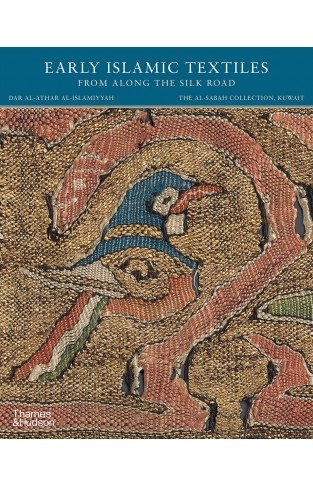
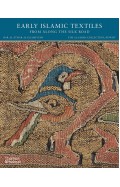
-120x187.jpg?q6)











